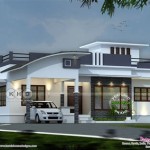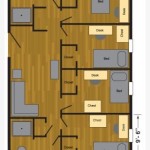East Facing House Vastu Plan With Pooja Room In Tamil Nadu
Vastu Shastra, the ancient Indian science of architecture, plays a significant role in the design and construction of homes, particularly in regions like Tamil Nadu where traditional beliefs are deeply ingrained in daily life. The orientation of a house, especially the direction it faces, is considered paramount for ensuring the well-being and prosperity of its inhabitants. East-facing houses are often favored due to their association with the rising sun, symbolizing new beginnings, positive energy, and spiritual growth. Integrating a Pooja room, a sacred space for worship, into the Vastu framework of an east-facing house requires careful consideration to maximize its beneficial influence.
Designing an east-facing house according to Vastu principles involves a holistic approach, considering not only the direction but also the placement of rooms, the flow of energy, and the alignment with the five elements: earth, water, fire, air, and space. In Tamil Nadu, where cultural traditions and religious practices are closely intertwined with daily life, adherence to Vastu guidelines is commonly observed during the planning and construction phases of residential projects. The integration of a Pooja room into an east-facing house is a crucial element, and its proper placement can significantly enhance the overall harmony and spiritual ambience of the home.
The following discussion will examine the key aspects of Vastu principles applicable to east-facing houses, with a specific focus on the ideal placement, design considerations, and significance of the Pooja room in the context of Tamil Nadu's cultural and architectural landscape. Implementing these guidelines can help create a living space that promotes health, wealth, happiness, and spiritual well-being for the residents.
Optimal Location of the Pooja Room
The placement of the Pooja room in an east-facing house, according to Vastu Shastra, is critical for harnessing positive energies. Ideally, the Pooja room should be located in the northeast corner of the house. This direction is considered highly auspicious as it is believed to be the abode of deities and the source of positive cosmic energy. In Tamil Nadu, this northeast orientation, known as "Eesanya moolai," is particularly revered.
Alternatively, the east or north directions are also acceptable for locating the Pooja room. However, the northeast corner remains the most preferred option. The reasoning behind this preference stems from the belief that the northeast is the most receptive to spiritual vibrations. Positioning the Pooja room in this area facilitates the flow of divine energy throughout the house, creating a peaceful and spiritually uplifting environment.
Avoid placing the Pooja room in the south, southwest, or northwest corners of the house. These directions are considered inauspicious and may bring negative influences, such as health problems, financial difficulties, or discord in the family. Furthermore, the Pooja room should not be located near or adjacent to bathrooms, toilets, staircases, or under staircases. These areas are considered impure and can contaminate the sanctity of the sacred space.
The positioning of the deities within the Pooja room is equally important. The idols should face either east or west, never south. Facing east allows the devotees to face the rising sun during prayers, symbolizing enlightenment and spiritual progress. The deities should be placed on a platform or altar, slightly elevated from the floor. It is also essential to ensure that there is sufficient space around the deities for movement and prayer.
The door of the Pooja room should ideally be located on the east or north side. A threshold should be present to prevent the entry of insects and dust. The door should be made of wood and should be decorated with auspicious symbols, such as Om, Swastika, or images of deities, reflecting the cultural aesthetics prevalent in Tamil Nadu.
Design Considerations for the Pooja Room
Beyond its location, the design of the Pooja room significantly contributes to its Vastu compliance and overall spiritual ambience. The size of the Pooja room should be proportionate to the size of the house. A small and simple Pooja room is preferable to a large and ostentatious one, as the focus should be on devotion and spirituality rather than display and extravagance.
The materials used in the construction of the Pooja room should be natural and auspicious. Marble, wood, and granite are commonly used in Tamil Nadu for flooring and wall cladding. These materials are considered pure and conducive to spiritual practices. Avoid using synthetic materials or dark colors in the Pooja room, as they can create a negative atmosphere.
Color plays a vital role in Vastu, and the colors used in the Pooja room should be calming and uplifting. Light colors, such as white, cream, light yellow, and light blue, are ideal choices. These colors promote peace, serenity, and positive energy. Avoid using dark colors like black, brown, or dark red, as they can absorb negative energy and create a depressing atmosphere.
Ventilation is crucial for maintaining a positive energy flow in the Pooja room. Ensure that there is adequate natural light and ventilation. Windows should be placed on the east or north side to allow sunlight to enter the room. Good ventilation prevents stagnation of energy and keeps the room fresh and vibrant. An exhaust fan can also be installed to remove stale air and maintain air circulation.
Proper lighting is another important aspect of the Pooja room design. Natural light is preferable, but if that is not possible, use soft and warm artificial lighting. Avoid using harsh or fluorescent lights, as they can create a disturbing atmosphere. Lamps or diyas (oil lamps) are traditionally used in Tamil Nadu during prayers and ceremonies, and they add a spiritual touch to the Pooja room.
Significance and Maintenance of the Pooja Room
The Pooja room holds immense significance in the lives of Hindus, especially in Tamil Nadu, where religious practices are deeply ingrained in the culture. It is a sacred space where devotees connect with the divine, offer prayers, and seek blessings. A well-maintained Pooja room is not only a place of worship but also a source of positive energy, peace, and harmony for the entire household.
Regular cleaning and maintenance are essential for preserving the sanctity and positive energy of the Pooja room. Keep the Pooja room clean and clutter-free. Dust the idols, clean the floor, and remove any unnecessary items regularly. A clean and organized Pooja room promotes a sense of order and tranquility.
The idols should be treated with respect and care. Bathe the idols regularly and adorn them with fresh flowers, garlands, and clothes. Offer prayers and perform rituals according to traditions and beliefs. Maintaining the sanctity of the idols is crucial for invoking divine blessings.
Burning incense sticks or dhoop in the Pooja room is a common practice in Tamil Nadu. The fragrance of incense creates a soothing and spiritual atmosphere. However, ensure that the Pooja room is well-ventilated to prevent the accumulation of smoke. Regular burning of incense is believed to purify the air and ward off negative energies.
The Pooja room should be used exclusively for worship and spiritual activities. Avoid using it for storage or any other purpose. Respect the sanctity of the space and maintain a reverential attitude while inside the Pooja room. This space should be a sanctuary from the stresses of daily life, a place to find peace, solace, and connection with the divine.
In conclusion, adhering to Vastu principles in the design and placement of a Pooja room in an east-facing house is of great importance in Tamil Nadu. By carefully considering the location, design, and maintenance of the Pooja room, one can create a harmonious and spiritually uplifting environment that promotes well-being and prosperity for the entire family. The integration of traditional beliefs with modern architectural practices can lead to the creation of homes that are not only aesthetically pleasing but also aligned with the ancient wisdom of Vastu Shastra. This holistic approach contributes to a balanced and fulfilling life, rooted in spiritual connection and positive energy.

East Facing Vastu House Plan 30x40 40x60 60x80
East Facing House Plan As Per Vastu Shastra Civiconcepts
East Facing House Plan As Per Vastu Shastra Civiconcepts

2 Cent 2bhk East Facing House Vastu Plan In Tamil 17 52 Feet 900 Square
East Facing House Plan As Per Vastu Shastra Civiconcepts

29 3 X 41 9 Best North Face Building Plan As Per Vasthu

Pooja Room Vastu Tips For All Directions In A House Plan Beautiful Homes
East Facing House Plan As Per Vastu Shastra Civiconcepts

25 Stunning 2bhk House Plan Ideas Designs For

7 Best South Facing House Vastu Ideas








